The first test to be carried out before construction is the soil’s safe bearing capacity. It is a preliminary test that must be carried out before the construction of any structure.
It is recommended that the safe bearing capacity of the ground be tested at all points of the foot.
What Is SBC of Soil?
Important Point
The safe bearing capacity of soil field test is performed to verify the soil’s ability to support loads. Let’s consider an example of a small plastic chair.
The small plastic chair made for children and can support a capacity of 10 kg. Suppose, if an adult has sat down, the chair will be broken.
The same case is applied to the soil. If more load is applied to the soil than its resistance, the soil begins to shift or break, which leads to settlements.
In order to keep the structure safe, the safe bearing capacity is calculated on the field at different points, and the foot selection is made accordingly.
The maximum load per unit area that the soil can support without any displacement or settlement is referred to as “Safe soil capacity.”
Also, read: What Is Drip Irrigation| Drip Irrigation Advantages | Types of Irrigation | Drip Irrigation System
Safe Bearing Capacity
The safe load to be taken on the soil for design purposes is called the Safe bearing capacity of the soil. The Safe bearing capacity of a soil can be defined as the bearing capacity of a soil divided by a number usually by constant and called safety factors.
The safety factor depends on the type of construction and the nature of the soil. Generally, a safety factor of 2 to 4 is used for different purposes.
So, if the final load of the soil is 6 tons/m2 and its safety factors are 3: the work or project loads to be given to this soil will be 6/3 = 2 tons/m2.
Soils and Their Bearing Capacity
The soils on which a structure rests can be classified into three categories:
- Hard soils: These soils are generally rocky in nature, incompressible, and can withstand reasonably good loads. Solid rock, moo rum, and rocky soils are examples.
- Soft Soils: These are alluvial soils and are compressible when loaded. They can carry a lot of loads. Common clay and common soils are examples of this.
- Spreading soils: These soils are compressible when confined and prevented from spreading. These soils, when loaded, spread laterally. Sand and gravel are examples of this type of soil.
Also, read: What Is Plinth | What Is Plinth Protection | Purpose of Plinth Protection
Safe Bearing Capacity Values for Different Soils
The capacity of the soil to allow loads from the foundation is called the bearing capacity of the soil. The gross pressure at the base of the foundation on which the soil fails is called the ultimate bearing capacity.
When considering different failure conditions, the ultimate bearing capacity is divided by a certain safety factor, and the resulting one is called the safe bearing capacity of the soil.
It is essential to know the bearing capacity of the soil before designing the foundation. It can be determined by different field tests.
However, there are standard values for safe bearing capacity available for different types of soils, and these values can be used when test data is limited or rapid construction is required.
Values of Safe Bearing Capacity for Different Soils
The following provides values for the safe bearing capacity of different soil types.
| Sl.No. | Type of Soil | SBC Kn/m2 |
Rocks |
||
| 1 | Laminated rocks examples are sandstone, limestone, etc. | 1620 kn/m2 |
| 2 | Hard rocks such as granite trap, diorite, etc. | 3240 kn/m2 |
| 3 | Residual deposits of broken rock and hard shale, cemented material | 880 kn/m2 |
| 4 | Soft rocks | 440 kn/m2 |
Cohesive Soils |
||
| 1 | A wet mix of clay and sand and clay that can be indented by thumb pressure | 150 kn/m2 |
| 2 | Black cotton soil / expansive clay (50% saturated)in the dry state | 130 to 160 kn/m2 |
| 3 | Soft indented clay with moderate thumb pressure | 100 kn/m2 |
| 4 | Soft shale, hard or hard clay in a deep bed, dry state | 440 kn/m2 |
| 5 | Medium clay easily cut with a miniature | 245 kn/m2 |
| 6 | Very soft clay that can be penetrated by tapping a few centimetres | 50 kn/m2 |
Cohesion less soil |
||
| 1 | The compact mix of gravel/sand and gravel with good resistance to tool penetration | 440 kn/m2 |
| 2 | Compact and dry coarse sand | 440 kn/m2 |
| 3 | Medium compact dry sand | 245 kn/m2 |
| 4 | The mixture of bulk gravel or sand, dry state | 245 kn/m2 |
| 5 | Fine sand and silt (composed of dry pieces) | 150 kn/m2 |
| 6 | Loose and dry fine sand | 100 kn/m2 |
Also, read: Hip Roof Vs Gable Roof | What Is Gable Roof | What Is Hip Roof
Methods for Determining Soil Bearing Capacity
There are many methods to discover the bearing capacity of soils. A very simple method of determining bearing capacity is as follows:
Dig a well of size 2 mx2 m and the required depth. The bottom of the well is leveled by simply spreading the soil manually. It should never be compacted.
In the center of this well, place a 60 cm x 60 cm x 5 cm steel plate. Head towards the pins equidistant from the steel plate, as shown in the figure.
On the steel plate, erect a 40 cm X 40 cm wall, with bricks, stone blocks, or concrete—almost 50 cm above the adjacent ground level.
The difference: the levels between the top of the pins and the wall are noticed by an irregular level. Now, gently place the bearings on top of the wall, building a wooden platform.
The cargo may consist of sandbags, beams, or R.S.J. The bearings are increased by an adequate amount. Usually 0’5 tonnes in an interval of 20 to 30 minutes.
Before each bearing increases, the difference in levels between the pins and the top of the wall is observed. Note that the level difference will be! Remain constant until the soil gives way.
As the difference increases, the bearing increase must be stopped. The bearing capacity of the soil will be the total bearing divided by the area of the steel plate.
Safe Bearing Capacity of Soil
The safe bearing capacity of soil refers to the maximum load that can be applied to the soil without causing shear failure or excessive settlement. It is an important factor in the design and construction of structures such as buildings, bridges, and foundations.
Sbc of Soil
The SBC of a soil is defined in terms of allowable pressure that can be applied. Unit of Safe Bearing Capacity is kN/m^2 or kip/ft^2. It is also referred as Net Bearing Capacity or Allowable Bearing Capacity of soil.
Safe Bearing Capacity
Safe bearing capacity can be theoretically defined as the permissible load the soil can withstand such that it neither fails in shear nor exceeds permissible settlement limits. The SBC of a soil is defined in terms of allowable pressure that can be applied. Unit of Safe Bearing Capacity is kN/m^2 or kip/ft^2.
Sbc Full Form in Construction
Soil Bearing Capacity
What Is Safe Bearing Capacity of Soil?
Safe Gross Bearing Capacity or Safe bearing Capacity is defined as the maximum gross pressure that soil can carry without shear failure.
What Is Sbc of Soil?
The safe bearing capacity of soil is determined through geotechnical investigations and soil testing. Various factors influence the safe bearing capacity, including the type and properties of the soil, groundwater conditions, and the size and shape of the foundation.
How to Calculate Sbc of Soil?
Take a square cube of known weight and dimensions. Now drop the square-cube on the pit with a known height. Measure the impression made on the pit by square cube using the scale. (For accurate results, Drop the cube several times on the same pit and calculate the average depth of Impressions “d”.)
Sbc Formula
The calculation of the Safe Bearing Capacity (SBC) of soil typically involves the following formula:
SBC = (qu * Nc * Sc) + (0.5 * γ * B * Nq * Sq) + (0.5 * γ * B * Nγ * Sγ)
Minimum Sbc of Soil for Construction
The minimum SBC of soil required for typical residential construction projects ranges from 100 kN/m² to 200 kN/m². However, for high-rise buildings, bridges, or other structures that experience heavy loads, the required SBC can be much higher, often exceeding 500 kN/m². The actual SBC for a particular construction project is determined through geotechnical investigations and tests conducted by a qualified engineer.
Types of Soil Bearing Capacity Test
The types of bearing capacity of soil
The most commonly used types of bearing capacity of soil are ‘ultimate bearing capacity’ and ‘allowable bearing capacity’.
Difference Between Sbc and Ubc
While the UBC may provide guidelines or specifications related to foundation design and soil conditions, it does not directly address or define the specific Safe Bearing Capacity (SBC) of soil. The determination of the SBC is typically performed through geotechnical engineering studies specific to the site, considering factors such as soil type, properties, and stability analysis.
What Is Bearing Capacity of Soil?
In a nutshell, bearing capacity is the capacity of soil to support the loads that are applied to the ground above. It depends primarily on the type of soil, its shear strength and its density. It also depends on the depth of embedment of the load – the deeper it is founded, the greater the bearing capacity.
Minimum Bearing Capacity of Soil
The minimum bearing capacity of soil for construction varies depending on several factors, including the type of structure, local building codes, and engineering design considerations. The minimum bearing capacity is typically determined to ensure the stability and safety of the foundation and the overall structure.
Safe Bearing Capacity of Soil Unit
The safe bearing capacity of soil is expressed in units of force per unit area, such as kilopascals (kPa) or pounds per square foot (psf).
Like this post? Share it with your friends!
Suggested Read –
- Coarse Soil
- Plate Bearing Tests
- Bearing Capacity Failure
- Difference Between 33, 43 and 53 Grade Cement
- Heartwood Vs Sapwood | What Is Sapwood | What Is Heartwood
- What Is Slump Cone Test | Principle of Slump Test | Types of Concrete Slump
- Dog-Legged Staircase | What Is Staircase | Advantages & Disadvantage of Dog-Legged Staircase
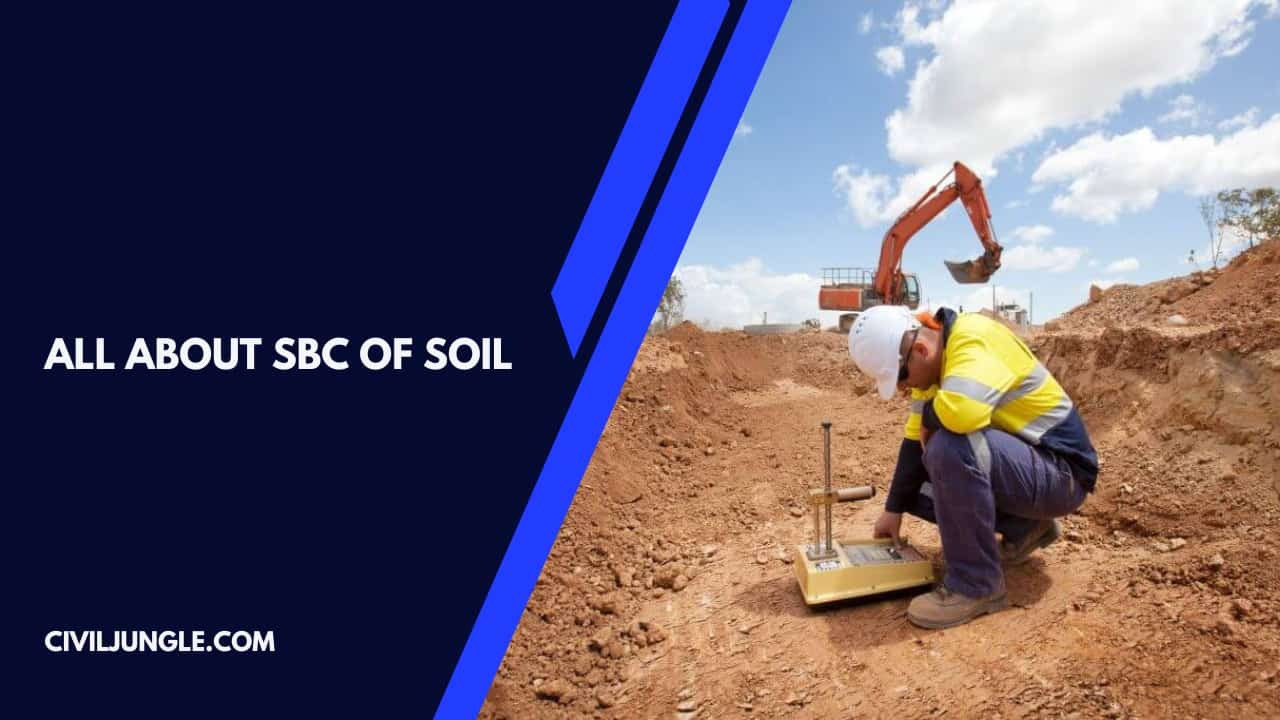
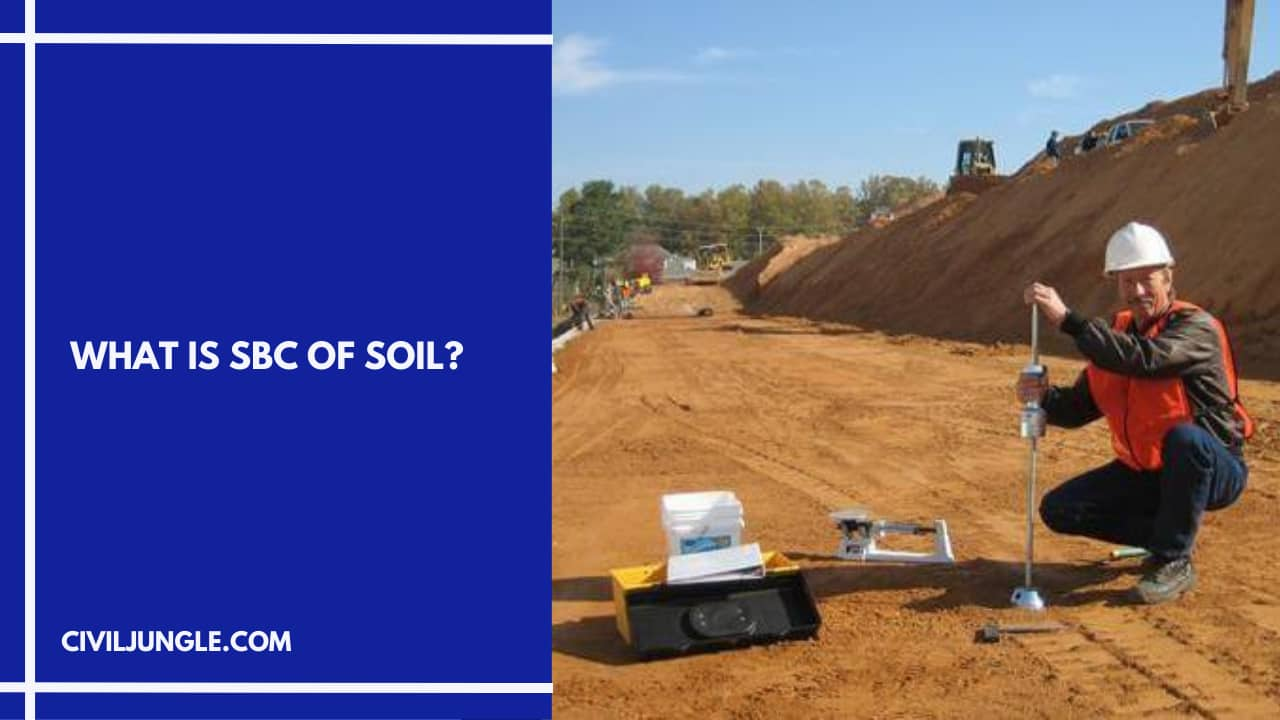
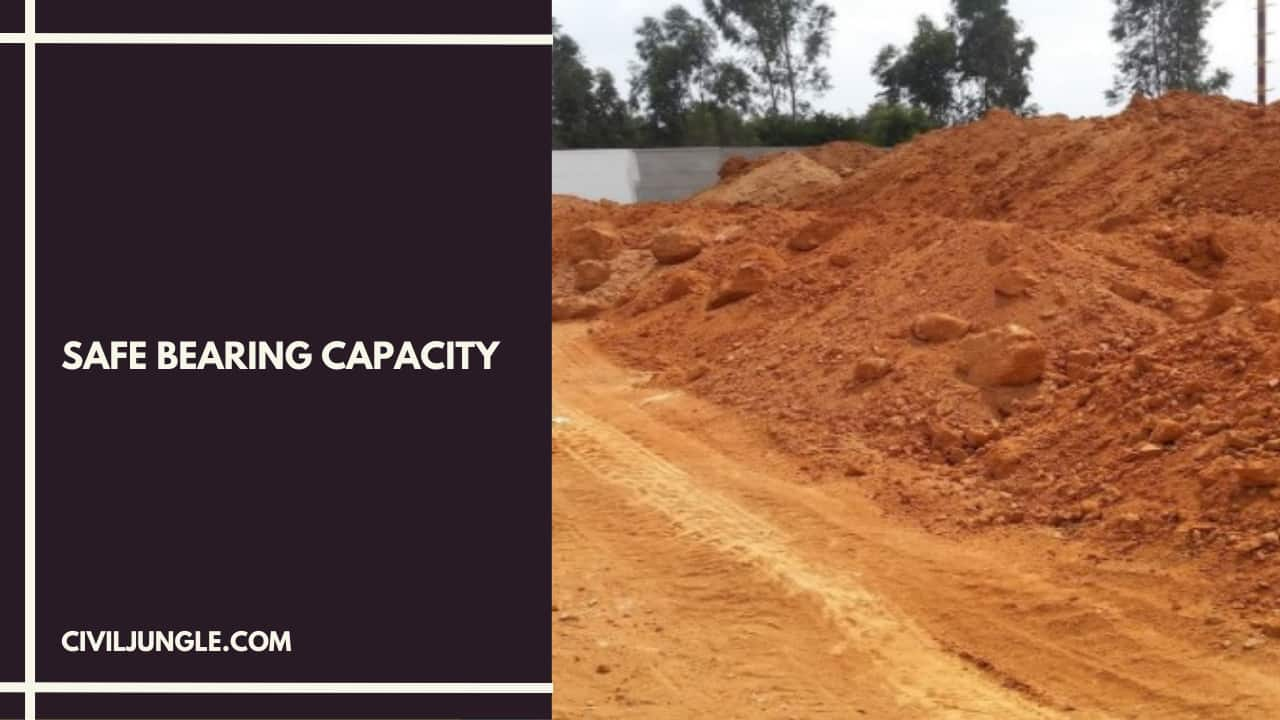
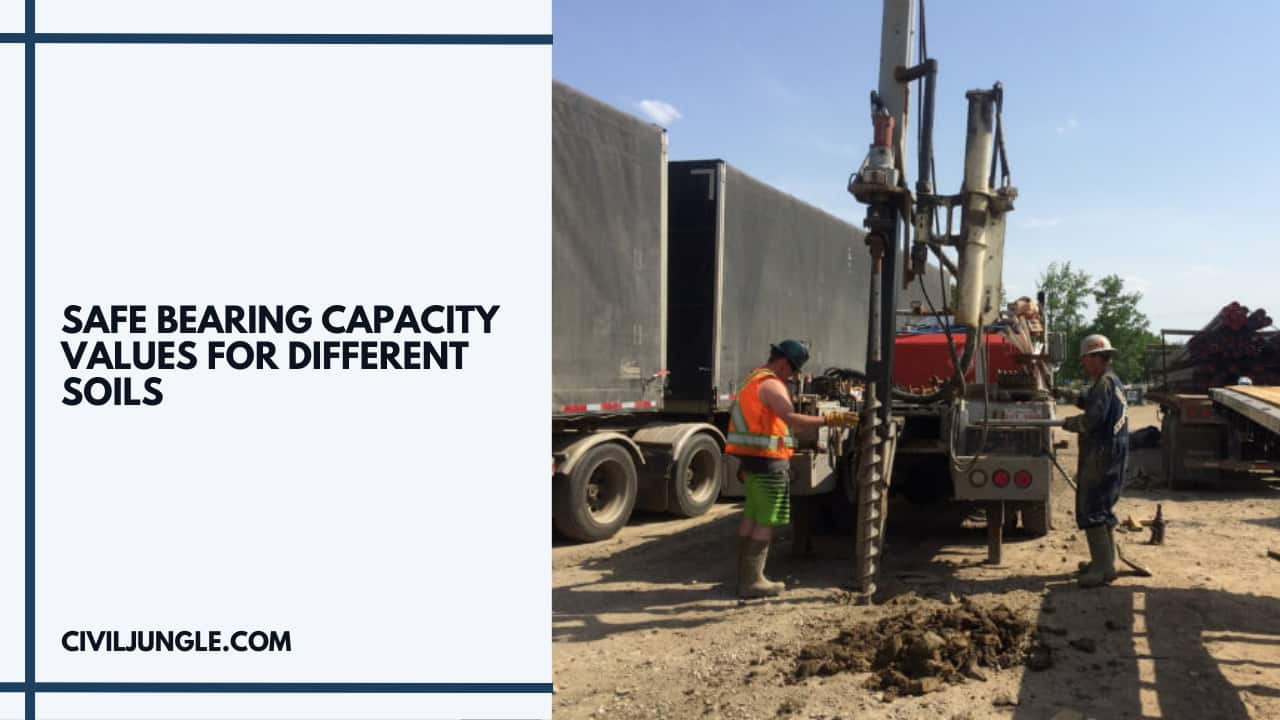
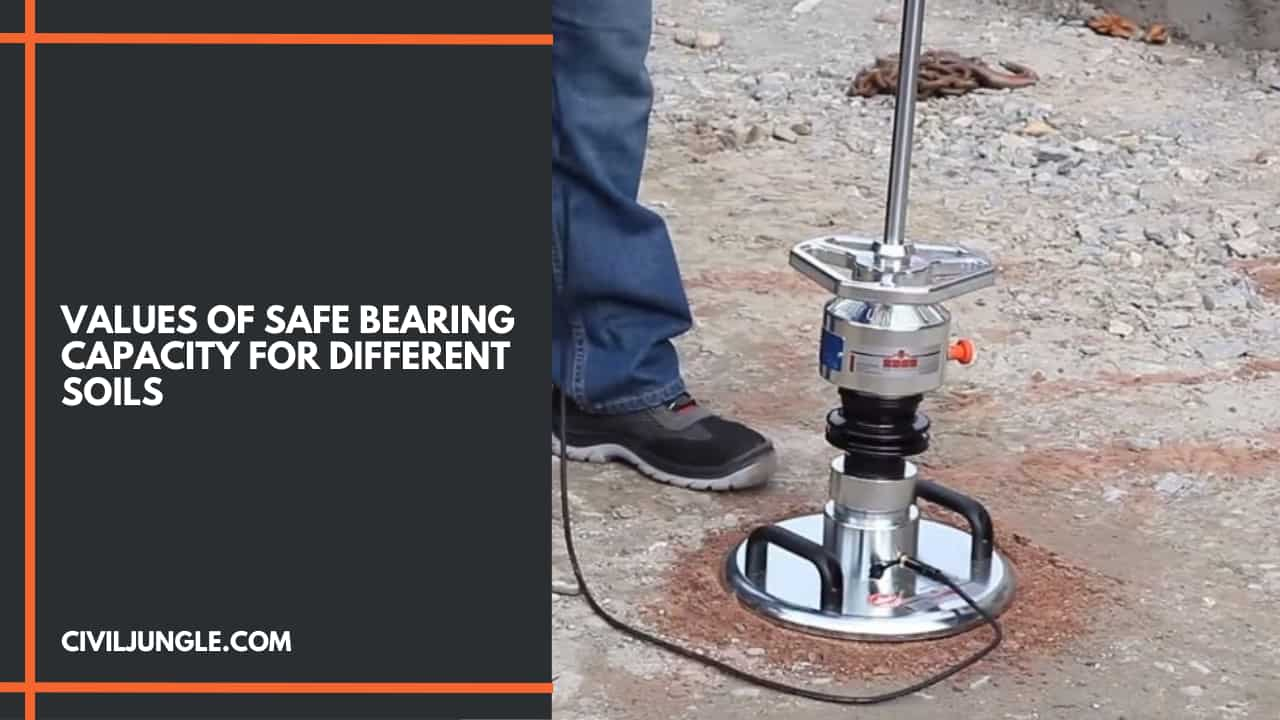
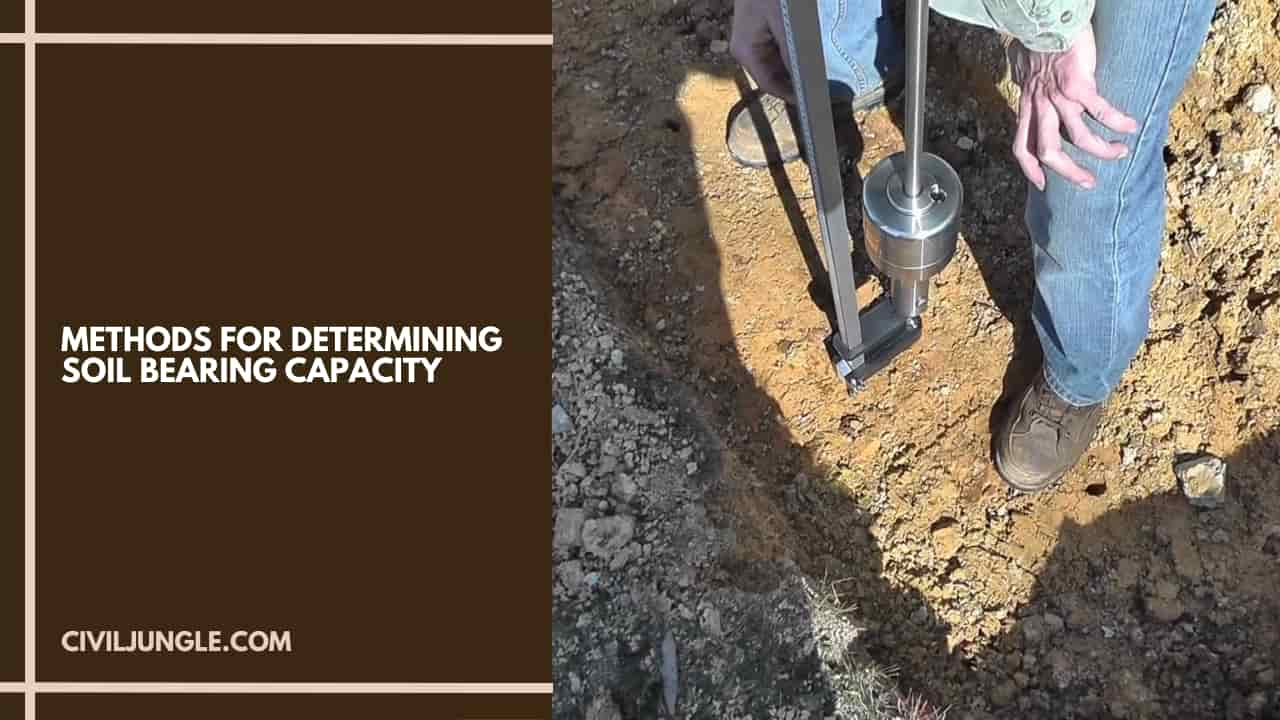

Leave a Reply